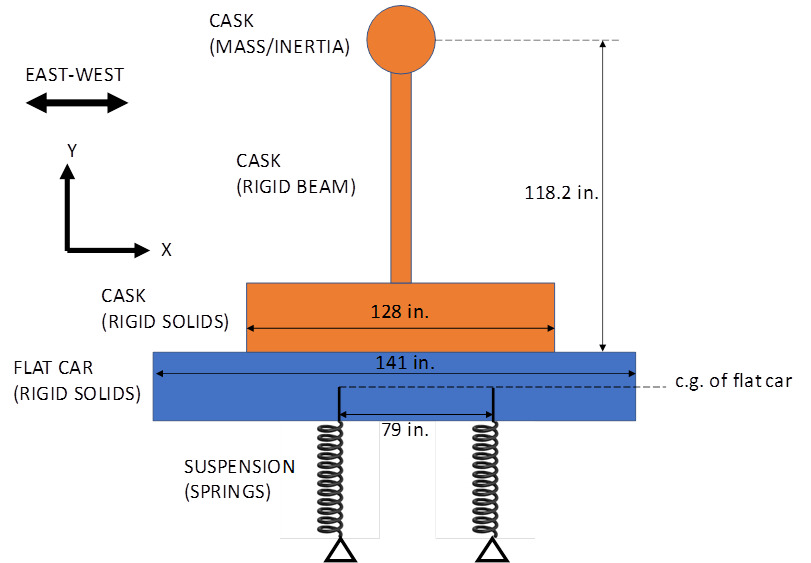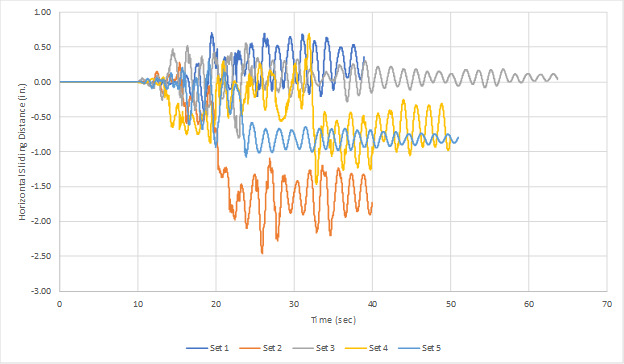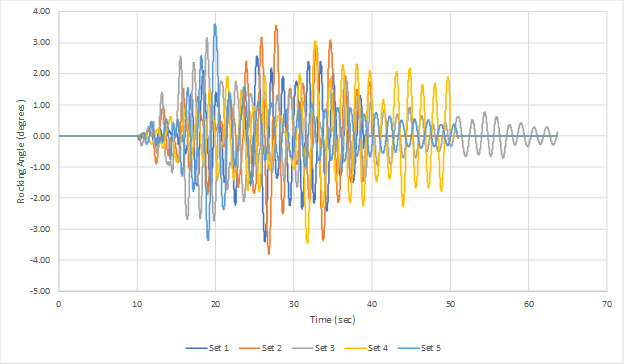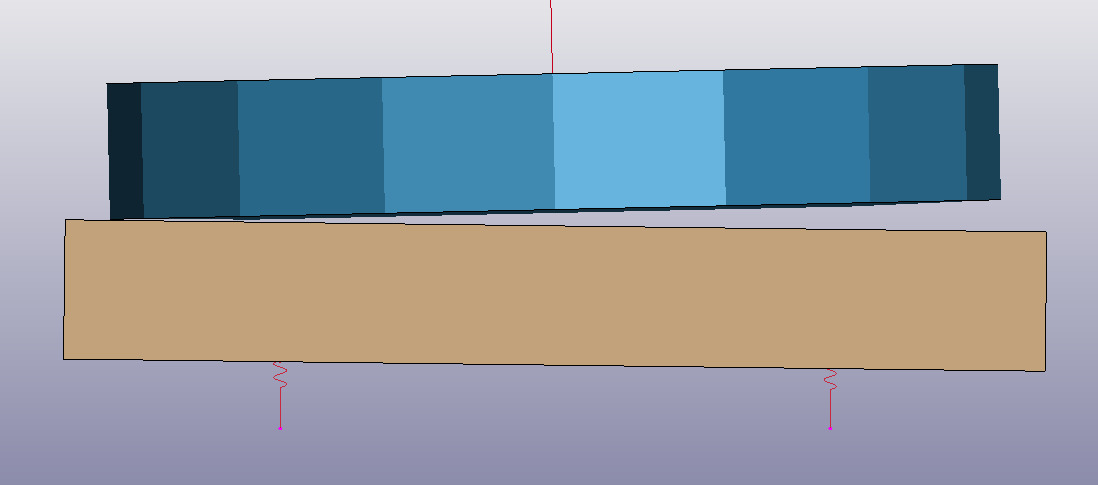Tonapah, AZ
Palo Verde Nuclear Generating Station, Spent Fuel Casks
Scope/Solutions
The nuclear generating station transports spent fuel casks from the fuel buildings to the spent fuel storage facility on 175 ton, 8 axle rail cars and needed to understand the risk of the casks sliding off the rail cars or tipping over, particularly during an earthquake. SGH analyzed the stability of the casks being transported during a seismic event.
SGH performed an explicit dynamic analysis to evaluate the stability of the spent fuel cask during seismic loading, including potential for the cask to tip over or to slide off the rail car. Highlights of our analyses include:
- Using LS-DYNA to model the cask and the rail car as rigid bodies with mass and geometry and account for the flexibility of the rail car suspension
- Matching five sets of time histories to the plant’s safe shutdown earthquake and applying horizontal and vertical earthquake time histories simultaneously
- Determining the maximum cask sliding distance and rocking angle for each set of time histories
- Calculating the factor of safety for tip-over as the ratio of the critical rocking angle that would cause tip-over to the average of the maximum rocking angles and the factor of safety for sliding as the ratio of the horizontal distance between the centroid of the cask and the rail car edge to the average of the five calculated maximum sliding distances
Project Summary
Solutions
Repair & Rehabilitation
Services
Advanced Analysis | Structures
Markets
Energy
Client(s)
Station owner/operator
Specialized Capabilities
Nuclear | Computational Mechanics
Key team members

Additional Projects
West
Idaho National Laboratory, Advanced Test Reactor (INL ATR) SPRA
In response to evolving seismic criteria and knowledge, Battelle Energy Alliance decided to update the 1991 seismic probabilistic risk assessment (SPRA) of the ATR and SGH developed seismic fragilities in support of the new SPRA.
West
Idaho National Laboratory, Advanced Test Reactor Control Room Wall
SGH evaluated and designed upgrades for the unreinforced concrete masonry partition walls that support numerous equipment and utility lines.



